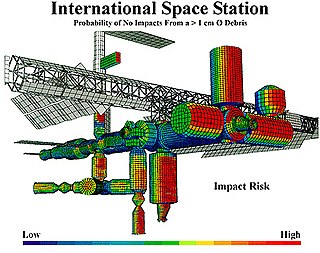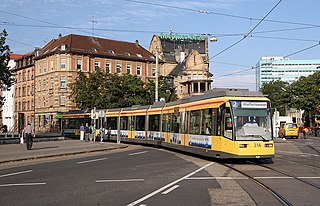
Risk management is the identification, evaluation, and prioritization of risks followed by coordinated and economical application of resources to minimize, monitor, and control the probability or impact of unfortunate events or to maximize the realization of opportunities.

Transport economics is a branch of economics founded in 1959 by American economist John R. Meyer that deals with the allocation of resources within the transport sector. It has strong links to civil engineering. Transport economics differs from some other branches of economics in that the assumption of a spaceless, instantaneous economy does not hold. People and goods flow over networks at certain speeds. Demands peak. Advance ticket purchase is often induced by lower fares. The networks themselves may or may not be competitive. A single trip may require the bundling of services provided by several firms, agencies and modes.
Technology assessment is a scientific, interactive, and communicative process that aims to contribute to the formation of public and political opinion on societal aspects of science and technology. This is a means of assessing and rating the new technology from the time when it was first developed to the time when it is potentially accepted by the public and authorities for further use. In essence, TA could be defined as "a form of policy research that examines short- and long term consequences of the application of technology."

Transrapid is a German-developed high-speed monorail train using magnetic levitation. Planning for the Transrapid system started in 1969 with a test facility for the system in Emsland, Germany completed in 1987. In 1991 technical readiness for application was approved by the Deutsche Bundesbahn in cooperation with renowned universities.
Broadly speaking, a risk assessment is the combined effort of:
- identifying and analyzing potential (future) events that may negatively impact individuals, assets, and/or the environment ; and
- making judgments "on the tolerability of the risk on the basis of a risk analysis" while considering influencing factors.
Program evaluation is a systematic method for collecting, analyzing, and using information to answer questions about projects, policies and programs, particularly about their effectiveness and efficiency. In both the public and private sectors, stakeholders often want to know whether the programs they are funding, implementing, voting for, receiving or objecting to are producing the intended effect. While program evaluation first focuses around this definition, important considerations often include how much the program costs per participant, how the program could be improved, whether the program is worthwhile, whether there are better alternatives, if there are unintended outcomes, and whether the program goals are appropriate and useful. Evaluators help to answer these questions, but the best way to answer the questions is for the evaluation to be a joint project between evaluators and stakeholders.

The Hong Kong Civil Service is managed by 13 policy bureaux in the Government Secretariat, and 67 departments and agencies, mostly staffed by civil servants. The Secretary for the Civil Service (SCS) is one of the Principal Officials appointed under the Accountability System and a Member of the Executive Council. He heads the Civil Service Bureau (CSB) of the Government Secretariat and is responsible to the Chief Executive (CE) for civil service policies as well as the overall management and development of the civil service. His primary role is to ensure that the civil service serves the best interests of the community and delivers various services in a trustworthy, efficient and cost effective manner. The CSB assumes overall policy responsibility for the management of the civil service, including such matters as appointment, pay and conditions of service, staff management, manpower planning, training, and discipline.

Stadtbahn is a German word referring to various types of rail transport. One type of transport originated in the 19th century, firstly in Berlin and followed by Vienna, where rail routes were created that could be used independently from other traffic.

The Nuremberg U-Bahn is a rapid transit system run by Verkehrs-Aktiengesellschaft Nürnberg, which itself is a member of the Verkehrsverbund Großraum Nürnberg. The Nuremberg U-Bahn is Germany's newest metro system, having begun operation in 1972. In 2008, driverless and fully automated trains were introduced on the new U3 line, making it Germany's first automatic U-Bahn line. The current network of the U-Bahn is composed of three lines, serving 49 stations, and comprising 38.2 kilometres (23.7 mi) of operational route, making it the shortest of the four metro systems in Germany, behind Berlin, Hamburg and Munich. Its DT1 vehicles are largely the same design as the A cars found on the Munich U-Bahn, and both transport companies once lent each other trainsets as reserve rolling stock for major events at the time when both systems were quite new. Such swaps are now no longer possible, as the rolling stock on each system have developed in ways that would require modification for use on the other system. The newer Nuremberg trains are incompatible with the Munich system.
Landscape assessment is a sub-category of environmental impact assessment (EIA) concerned with quality assessment of the landscape. Landscape quality is assessed either as part of a strategic planning process or in connection with a specific development which will affect the landscape. These methods are sub-divided into area-based assessments or proposal-driven assessments, respectively. The term 'landscape assessment' can be used to mean either visual assessment or character assessment. Since landscape assessments are intended to help with the conservation and enhancement of environmental goods, it is usually necessary to have a fully geographical landscape assessment as a stage in the process of EIA and landscape planning. During the initial phases of a project, such as site selection and design concept, the landscape architect begins to identify areas of opportunity or setbacks that may provide constraints. The architect prepares alternative options in order to compare their assessments and identifies the proposals which allow for the least adverse effects on the landscape or views. A landscape professional works with a design team to review potential effects as the team develops a sustainable proposal. Upon developing a design proposal, the landscape professional will identify and describe the landscape and visual effects that may occur and suggest mitigation measures to be taken in order to reduce negative effects and maximize benefits, if any.

Transportation forecasting is the attempt of estimating the number of vehicles or people that will use a specific transportation facility in the future. For instance, a forecast may estimate the number of vehicles on a planned road or bridge, the ridership on a railway line, the number of passengers visiting an airport, or the number of ships calling on a seaport. Traffic forecasting begins with the collection of data on current traffic. This traffic data is combined with other known data, such as population, employment, trip rates, travel costs, etc., to develop a traffic demand model for the current situation. Feeding it with predicted data for population, employment, etc. results in estimates of future traffic, typically estimated for each segment of the transportation infrastructure in question, e.g., for each roadway segment or railway station. The current technologies facilitate the access to dynamic data, big data, etc., providing the opportunity to develop new algorithms to improve greatly the predictability and accuracy of the current estimations.

UK Ultraspeed was a proposed high-speed magnetic-levitation train line between London and Glasgow, linking 16 stations including Edinburgh, Birmingham, Manchester and Newcastle and six airports. It was rejected in 2007 by the UK government, in favour of conventional high-speed rail. The company behind the proposal ceased efforts to promote it in early 2013.

Construction of the first high-speed rail in Germany began shortly after that of the French LGVs. However, legal battles caused significant delays, so that the German Intercity-Express (ICE) trains were deployed ten years after the TGV network was established.

The Karlsruhe Stadtbahn is a German tram-train system combining tram lines in the city of Karlsruhe with railway lines in the surrounding countryside, serving the entire region of the middle upper Rhine valley and creating connections to neighbouring regions. The Stadtbahn combines an efficient urban railway in the city with an S-Bahn, overcoming the boundary between trams and trains. Its logo does not include the green and white S-Bahn symbol used in other German suburban rail systems and the symbol is only used at stops and stations outside the inner-city tram-operation area.
The Waikato Expressway is a dual carriageway section of State Highway 1 in the Waikato region of the North Island of New Zealand that is being constructed in stages. It forms part of the link between Auckland and Hamilton. When completed it will stretch 116 km (72 mi) and be 6 km (3.7 mi) shorter than the roads it replaced.
BREEAM, first published by the Building Research Establishment (BRE) in 1990, is the world's longest established method of assessing, rating, and certifying the sustainability of buildings. More than 550,000 buildings have been BREEAM-certified and over two million are registered for certification in more than 50 countries worldwide. BREEAM also has a tool which focuses on neighbourhood development.
Post Occupancy Evaluation (POE) has its origins in Scotland and the United States and has been used in one form or another since the 1960s. Preiser and colleagues define POE as "the process of evaluating buildings in a systematic and rigorous manner after they have been built and occupied for some time".

The Karlsruhe tramway network is a network of tramways forming part of the public transport system in Karlsruhe, a city in the federal state of Baden-Württemberg, Germany.

The Karlsruhe–Basel high-speed railway is a new line being built on the route of the Mannheim–Karlsruhe–Basel railway. As a result of the project, the railway through the Rhine Valley is being upgraded to four continuous tracks and its operational efficiency will be increased as a result of the segregation of the various transport flows. The travel time for passenger services between Karlsruhe and Basel is to be shortened by 31 minutes. The project forms part of the Rotterdam–Genoa corridor and part of it is also part of the Main line for Europe. In September 2010, it was forecast to be completed in 2020.